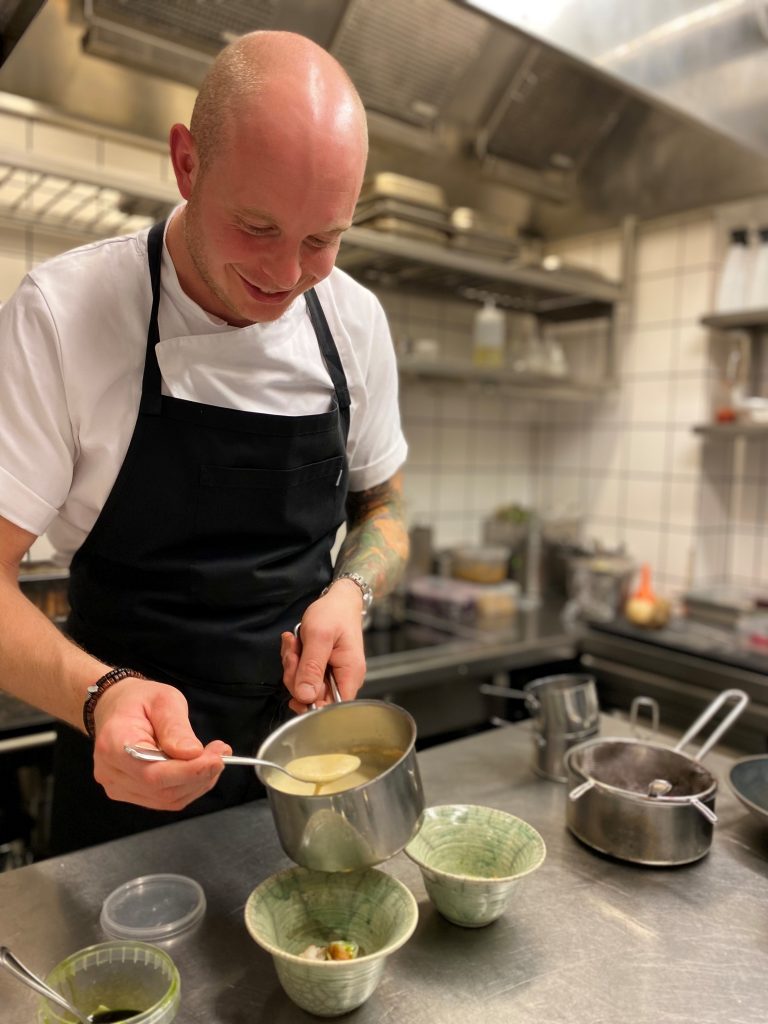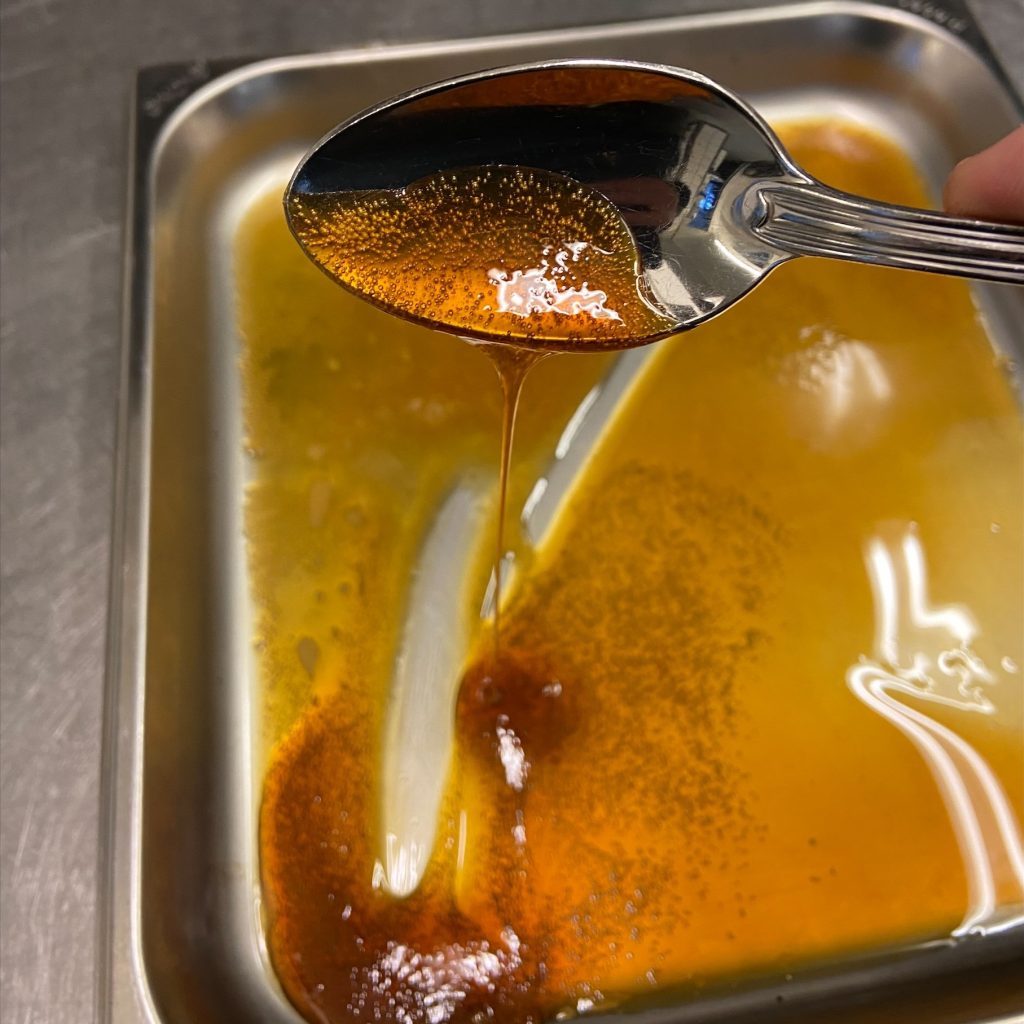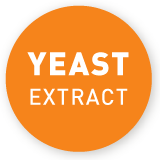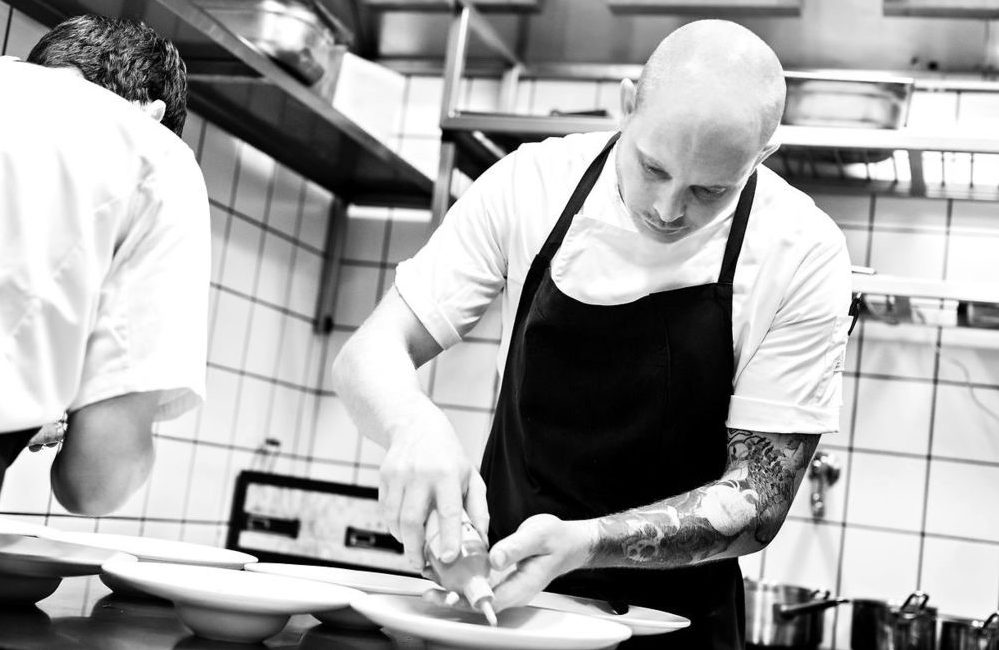Anders Johst is head chef at Villa Vest in Lonstrup, North Jutland, in Denmark. During his training, he learned the classical cooking techniques as well as the scientific aspects of cooking. Having worked in different 3-star restaurants, he developed his knowledge further and now not only likes to use yeast extract often in his cooking, but also makes it in-house and mixes it with other ingredients such as berries and seasonal vegetables. In our interview, he answers some questions about yeast extract.
Mr. Johst, how did you discover vegan cuisine?
AJ: It went that way on its own. The area we live in provides us with many different choices of vegan options, both from the forests around us but also from our local farmer. The nature around us provides many different herbs which we then pickle, salt, turn into syrups, all of which are then used to season and bring balance to the various vegan dishes.
Because we have all these options, we decided to try and show the world that you do not need to use animal products, to try and show what you can do with good, locally sourced vegetables and with what nature provides in the wild.
What benefits and/or challenges does vegan cooking offer you as a chef?
AJ: It forces me to broaden my own horizons and ways of thinking when it comes to cooking. In the restaurant business there are certain standards that you must hold yourself up to. People come and pay money for a good experience and good food, and if there is a vegan option you must uphold the exact same standards, which can sometimes prove difficult without the umami of a great piece of meat, or the fattiness of cream in an ice-cream. This can often be a challenge, but it can also be extremely exciting and fun to delve into.
Do you often use yeast extract in your cooking? How do you use it?
AJ: In my first year as a Head Chef, it had a more prominent role in my dishes. We used it as a base for various pesto like pastes with herbs in them, and a fudge where we made it both with butter but also a vegan version in which the butter was replaced by an oil made from wild cherry wood, which has a very thick viscosity to it, resembling butter in texture at room temperatures.
Now after I have gained more experience it has a more foundational and supporting role in the dishes where we use it to boost various tastes, and thereafter as a seasoning, like a barbeque glace.
What taste and/or textual opportunities does yeast extract offer you when you create vegan recipes?
AJ: Texture wise it gives viscosity and thickness to dishes, and taste wise it rounds of the flavour of almost everything you mix it with, whether it is herbs in a paste or a glace.
But we have found different uses for the different stages of the yeast extract production process. The first, which is roasting the yeast, has a delightful roasted nut taste and smell, and has an amazingly crunchy texture, resembling a very nice bread crust. We have served this stage without bread serving to help boost the crunchy texture and to give off the feeling we get when biting into freshly baked bread.
We have also used a mixture of the first and second stages to make ice-cream and hot cocoa. The second stage is when we have made the roasted yeast into clarified yeast water.

“Yeast extract rounds off the flavour of almost everything you mix with it, whether it is herbs in a paste or a glace.”
Can you briefly and simply explain the process of the in-house production of yeast extract?
AJ: We start by roasting the yeast in the oven, until golden and crunchy. Then we mix it with other ingredients which have a lot of sugars in them, like the lacto-fermented berries and misos we have in house. The high sugar contents of these things will bind the dry yeast and start resembling a porridge which we then freeze.
After freezing, it is then strained slowly through a fine sieve, clarifying the liquid. We find out the weight of the clarified liquid, and then it is reduced in a dehydrator until it reaches 8% of its original weight. Then we have the finished product.

How did you come up with the idea of combining yeast extract with other ingredients? What combinations do you make?
AJ: The idea to use yeast in this way started mostly because it is quite easy to come by, and it is also not as expensive as many other fermented products. It was then pushed further because roasting the yeast gives its taste and aroma a hint of “meat umami” much like the smell and taste of roasted chicken skin, which then helps bring that same depth of flavour to our various vegetarian dishes.
What do you think works well in food pairing with yeast extract?
AJ: Seasonal berries and vegetables work best with yeast extract. When the ingredients’ sugar contents are at their highest, that is when the extract really shines through to give them the extra lift as a seasoning.
What is your favorite dish with yeast extract?
AJ: My favorite dish with yeast extract is by far the oyster cabbage dish with green goose berries. It has a cream made from oysters at the bottom, with poached oyster, a green gooseberry compote and blanched cabbage, which was basted in the yeast and parsley paste.




